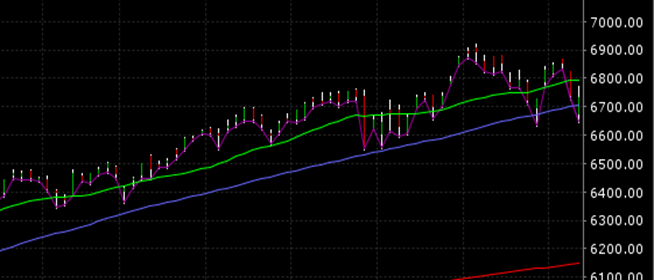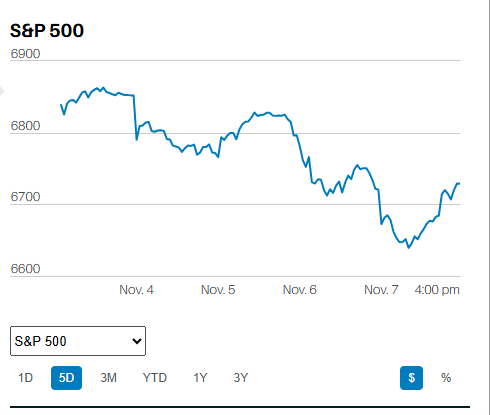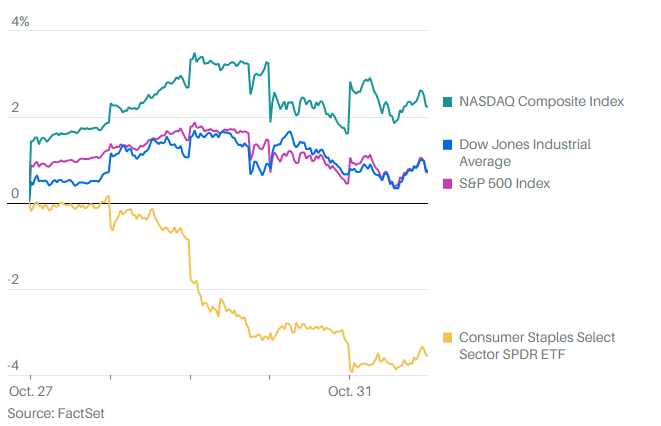Stealth Index Portfolios Everywhere

Market Update
The S&P 500 lost 1.1% last week to close at 4090.46. The Nasdaq dropped 2.4%. The S&P attempted to rally on Tuesday after a down day Monday. It failed. The index peaked Tuesday just shy of 4,180 near the end of the day. Wednesday saw a down opening that took the index below 4,120. An up-opening Thursday was sold with the index bottoming for the week Friday morning at 4,060.
Support at 4,100 didn’t hold last week. It is a tossup whether the S&P will continue lower or take another run at 4,200. Regardless, the S&P likely has limited upside. It does have significant downside, given the rate hiking environment. Hikes are now likely in March and May. June is a possibility as well if inflation doesn’t continue to fall in the coming months.
Several economists are questioning whether inflation will continue to fall. Mohamed El-Erian for instance believes that inflation has a 75% chance of rebounding. El-Erian, President of Queens’ College, Cambridge, and chief economic advisor to Allianz. Allianz is the corporate parent of PIMCO. El-Erian believes that the most likely scenario is that inflation remains sticky at 3%-4%. He thinks the Fed will need to trigger a significant recession to force inflation down to 2%. Meanwhile, UBS has warned that inflation’s recent downward trend could be a “head-fake”. Bank of America has also warned of rebounding inflation. A slowing of the disinflationary trend will lead to market declines, both stock and bond.
Falling earnings are also a catalyst for declines in the stock market. Earnings growth has turned negative in 2023. Analysts’ consensus estimate is for negative earnings in the first two quarters of the year. It is the fifth time since 2000 that forward earnings per share growth has turned negative, according to ISABELNET.com. Stock prices have followed EPS lower the prior four times. The bulk of the bear market losses have occurred after earnings crossed from positive to negative.
Risk remains to the downside with limited upside potential in 2023.
Economic Indicators
It was a light weak for economic indicators. Initial jobless claims remained below 200,000. Claims were 196,000 last week, rising from a low 183,000 the prior week. The UMich consumer sentiment index for February rose to 66.4 from 64.9. It was a 13-month high. UMich 1-year inflation expectations climbed to 4.2% from 3.9%.
Fed speakers were the focus last week. The message delivered was hawkish. The Fed is adamant that it will keep rates higher for longer to quell inflation. The bond market is beginning to price the hawkishness into the yield curve. The two-year rate bottomed at 4.06% on 18 January. It was 4.5% Friday.
Another Stealth Index Portfolio
We wrote about stealth indexing a few weeks ago. One portfolio had 125 holdings, many of them stock mutual funds with hundreds of stocks. The portfolio had significant overlap. Many stocks were owned by 12 and 13 different funds. Knowing what you own and how much you own is a basic of investing. It’s hard to follow hundreds of companies. It’s hard to know how much you own when there is so much overlap. The other portfolio had 132 holdings, 116 stocks and 16 mutual funds. There were eight stock mutual funds and eight bond mutual funds. The stock mutual funds owned hundreds of stocks between them, again with large overlap.
Now comes yet another stealth index portfolio. For those keeping score, it is three stealth index portfolios in a row for us at Norwood Economics. The latest stealth portfolio only has 30 holdings, but 28 of them are mutual funds. The mutual funds own anywhere from 70 to 300 stocks. There is a large overlap with many positions held by eight to ten different mutual funds. A back-of-the-envelope calculation estimates that the portfolio has exposure to around 2,100 stocks. (Multiplying 28 mutual funds by an estimated average of 125 stocks gives you 3,500 stocks. Assuming 40% overlap drops you to 2,100 unique holdings).
Anyone owning that portfolio owns the market. The portfolio will perform in line with the market minus the fees and expenses. The operating expense ratio for this portfolio is 0.85%. That expense is the cost of the portfolio and doesn’t include the financial advisor’s fee. You’re better off firing the financial advisor and building an index portfolio. Save yourself around 0.80% in operating expenses and 1% or more in financial advisor fees. Saving 1.8% annually in fees and expenses means lots more money to live on in retirement.
Norwood Economics currently owns 24 stocks. Most of our clients own most of those stocks. We use index ETFs to gain exposure to fixed-income, real estate, and emerging market stocks. There is no overlap in client portfolios. The portfolio expense is less than 0.10%. We are NOT stealth indexing for our clients. Rather, we are attempting to earn our active management fee.
Regards,
Christopher R Norwood, CFA
Chief Market Strategist











